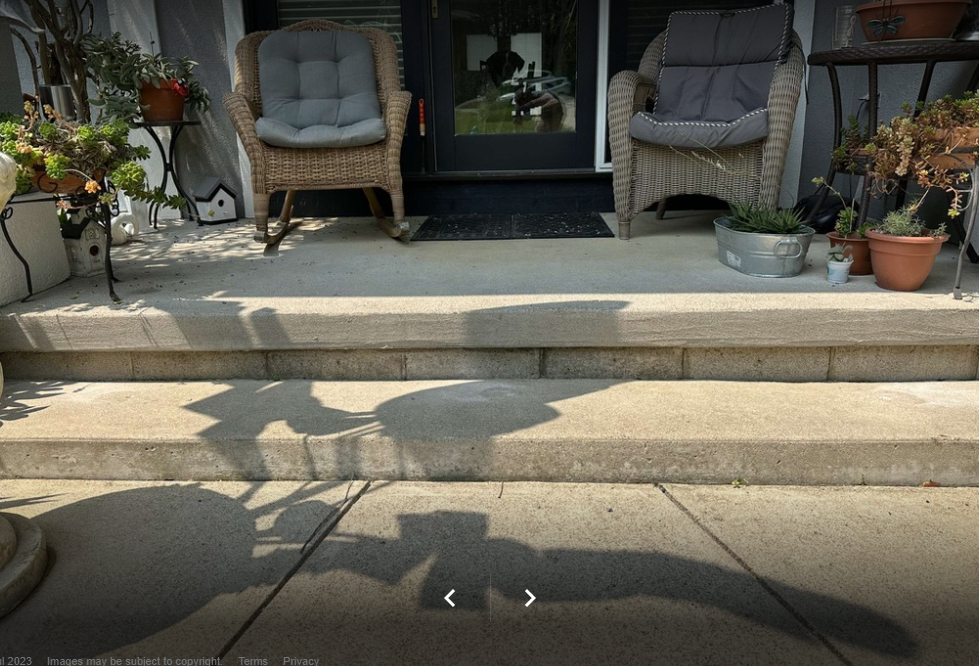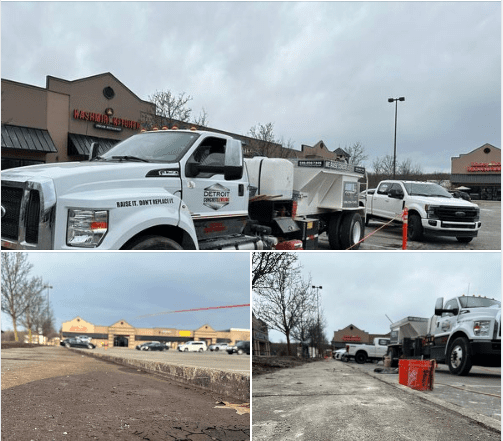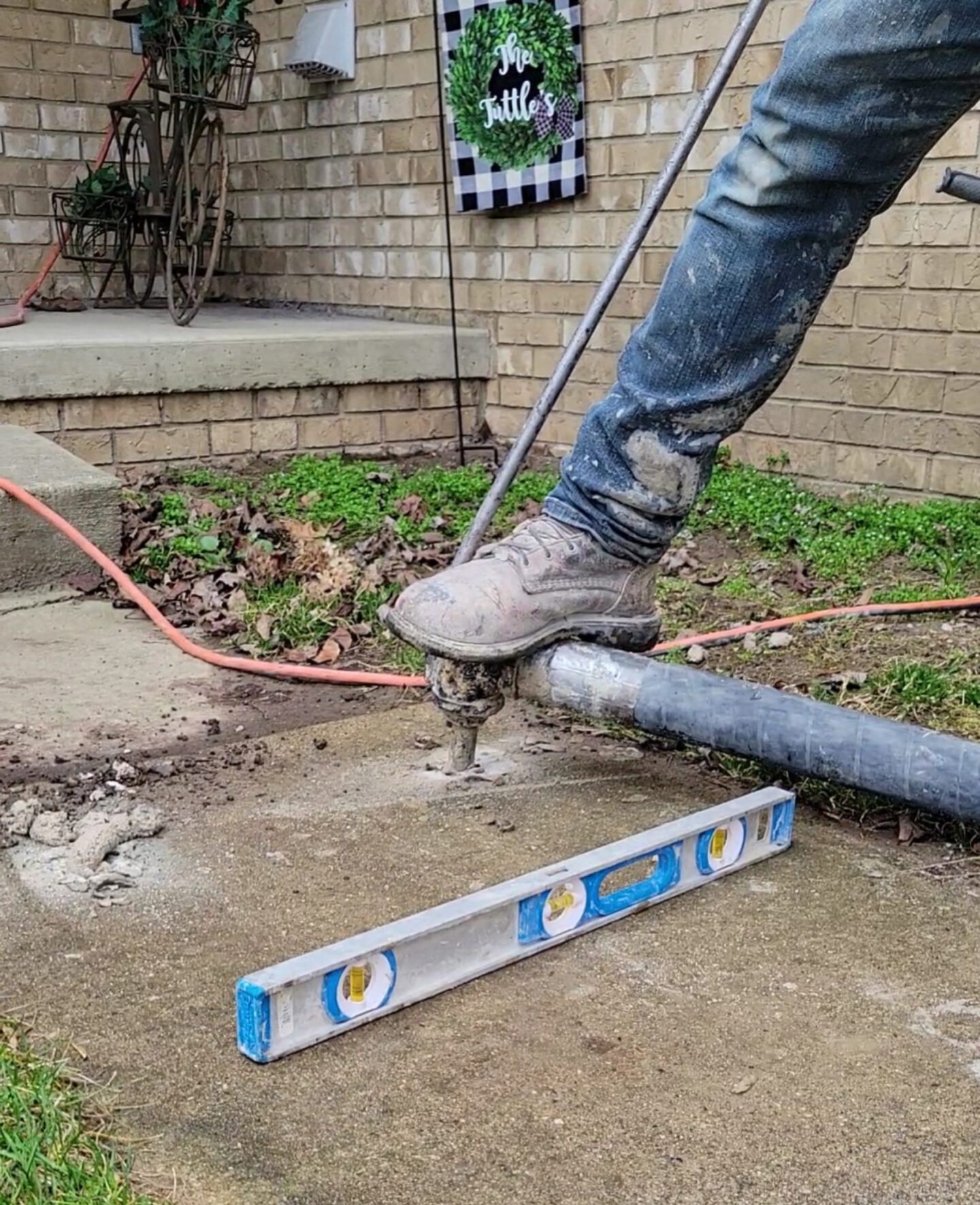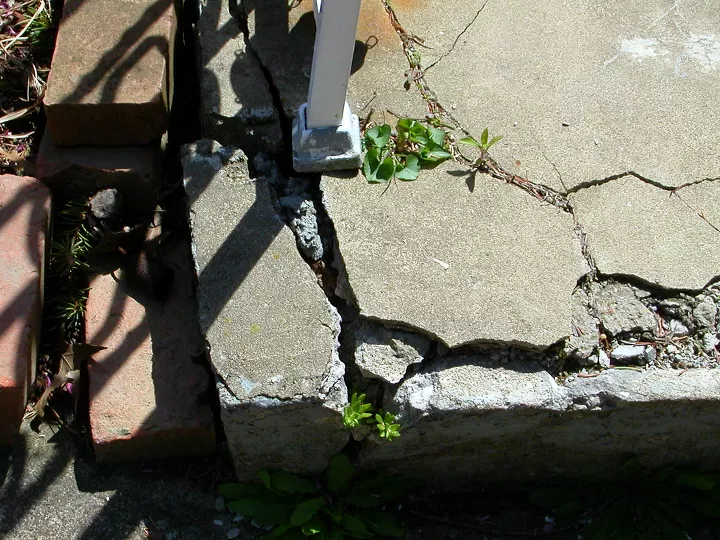Indications that You May Need Concrete Leveling/Mudjacking Services
The term Mudjacking dates back over 100 years, it refers to a common method used to fix uneven or sinking concrete slabs. In modern times, terms such as slabjacking, concrete leveling and concrete raising have been assumed but while there are many names, they all refer to the same effective concrete repair process. In this article, we will discuss what concrete leveling is and the indications that will help you decide when you need concrete leveling.
What is Concrete Leveling?
Concrete leveling aka mudjacking, is a method of concrete repair that began in the early 1900’s. It is a 3-step process of raising concrete slabs that have settled or sunk over time. This can be caused by a variety of factors such as soil erosion, tree roots, or poor compaction during the initial installation. Concrete leveling is done by drilling small holes through the affected concrete (step 1) and then injecting material under the slab (step 2), followed by patching the holes (step3).
Back when concrete leveling started, the material used in the process was a mixture of soil and water, hence the name mudjacking! Over the years, the materials and equipment used have drastically advanced. Nowadays, terms such as slabjacking, concrete leveling and concrete raising have been assumed by companies that offer materials other than mud. While there are many names, they all refer to the same effective concrete repair process. Depending on the company and application, the modern materials used are typically a combination of water and pulverized limestone, or polyurethane foam, which fills any voids and raises the slab back to its original position. Some companies still use a mixture of water and sand or topsoil for their concrete raising, but your specific application will be a large factor in which material is best for your project. For help deciding which material is best for you, please see related article.
How To Tell If You Need Concrete Leveling/Mudjacking?
- Uneven surfaces: If you notice that your concrete slabs are no longer even with each other or drastically sloped, it’s time to consider concrete leveling. This can include areas such as your driveway, sidewalk, patio, pool deck, garage floor, or even the slab your home is on.
- Trip hazards: Uneven concrete can create trip hazards, which can be a safety concern for you and your family, or anyone walking on your property. If you notice any areas where the concrete is raised or sunken, it’s best to have them leveled.
- Water pooling: If you notice water pooling on your concrete surfaces, it may be a sign of settlement. Poor drainage can be caused by a lack of proper pitch or grading, which can lead to further damage if left unaddressed.
- Cracking: If you notice cracks in your concrete slabs, it may be a sign of settling or the presence of ground voids. This can cause your concrete surfaces to become uneven. Cracks in concrete can also allow water to penetrate beneath the slabs and should be addressed as soon as possible.
Important Factors When Considering Mudjacking/Concrete Leveling
- Area / Application: In most cases, concrete leveling is an affordable repair solution that is on average 30-60% less expensive than replacing the entire section. Slabjacking can be performed on almost all concrete, such as walkways, driveways, patios, porches, pool decks, garage floors, sunrooms, poured steps, and house slabs. However, it is important to note that not all concrete should or can be raised. This will depend on the original construction of the slab. For example, most residential concrete basement floors are tied to the foundation of the home and would require foundational supports, therefore cannot be lifted with slabjacking equipment. In cases where the integrity of the concrete has been drastically compromised, such as severe cracking and crumbling, there is a risk that the concrete will not withstand the high-pressure material injection and will not lift or be damaged further. Consulting with an honest and knowledgeable contractor is important to ensure your repair will be successful.
- Large Areas & Heavy loads: If you have a large concrete surface or concrete that is subjected to heavy loads, such as a parking lot, garage, loading dock or industrial flooring, slabjacking may be the best and most cost-effective option. This method can provide additional support, fill voids and prevent further damage without replacement, but it is important to use a material with high compression strength so ensure longevity of the repair.
- Soil conditions: If the soil conditions around your concrete slab are unstable or there are ground voids, concrete raising can be an excellent option, when paired with soil stabilization techniques. This can include areas that are newly developed or areas that are prone to moisture retention or erosion.
- Budget: If you have a limited budget, mudjacking may be a more affordable option than replacing the entire slab. However, it’s important to note that it may not be a permanent solution for every application, a qualified concrete leveling specialist will be able to recommend your best solution and inform you if the concrete leveling process may need to be repeated in the future.
- Time Constraints: If you have time constraints, mudjacking is a much faster process than concrete replacement, with less downtime. Residential concrete replacement, on average, takes 1-3 days to complete and is unusable for 2-7 days at a minimum. Depending on the size of the area, majority of residential concrete raising projects are completed within 2-10 hours and in most cases, your concrete is fully useable a few hours after your project is finished. The quickness of the process makes it ideal for commercial and industrial applications where the concrete is always in use, such as building entrances, public walkways, machine shop flooring, and parking lots.
Is Concrete Leveling/Mudjacking Right for You?
Ultimately, the decision to use concrete leveling aka mudjacking will depend on a variety of factors, including the application, the size of the affected area, load bearing capacity, the ground beneath the concrete, your timeframe and your budget. In some cases, a combination of materials may be necessary to fully address the issue.
If you’re unsure if concrete raising is right for you, it’s best to consult with a professional. A qualified contractor will be able to assess the situation and provide recommendations based on your specific needs.
Uneven or sinking concrete can be a frustrating problem for homeowners and business owners alike, but it’s important to address the issue as soon as possible to prevent further damage, more expensive repairs, or safety concerns. Choosing to level your concrete with the slabjacking process can be very effective in restoring your concrete surfaces back to their original position. By paying attention to the signs and consulting with a professional, you can ensure that your driveway walkway, concrete porch, parking structure, or shop floor will look great and be safe.




